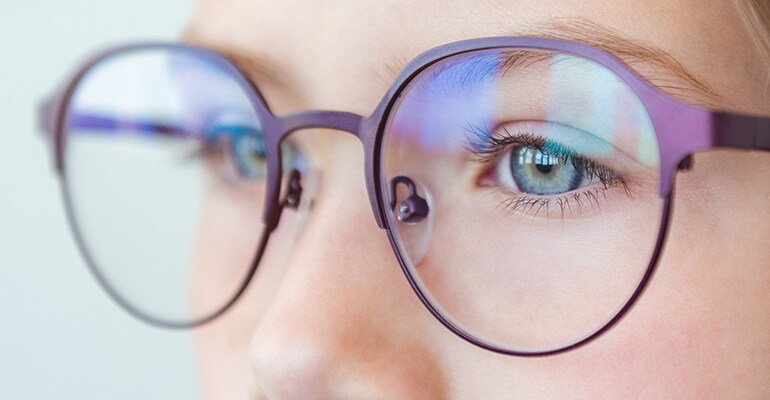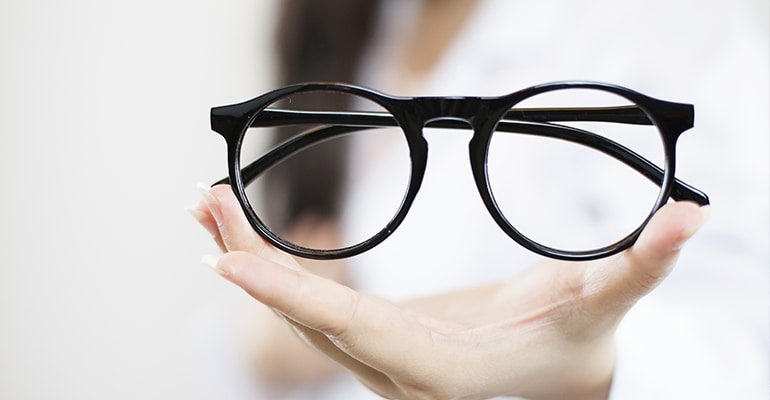A Look at the Materials Used in Eyeglasses
Jan 15, 2024
Eyeglasses, otherwise known as spectacles or glasses, have been an essential component of human life for centuries, aiding vision and protecting eyes from harm. But have you ever wondered about the materials that help create these essential aids?

Glass: The Classic Choice
The original lenses were made from glass. Glass lenses offer excellent optical clarity and are resistant to scratches. Even though glass is heavier than alternative materials, glass lenses are trusted for their superior optical quality, allowing for crisp vision.
Plastic: The Modern Revolution
Plastic lenses revolutionized the eyewear industry. They're lighter than glass and come in a plethora of colors, offering versatility and comfort. Today, most standard eyeglasses are made from a type of plastic called CR-39, which stands for "Columbia Resin #39". CR-39 plastic is an inexpensive choice, offering good optics.
Polycarbonate: For Impact Resistance
Polycarbonate is another popular material used in eyeglasses. First used in the 1970s, it's a type of thermoplastic that is light, provides UV protection, and is impact-resistant, making it an excellent choice for children's eyewear and for protective and sports-specific eyewear.
High-index Plastic: For Thin and Light Lenses
High-index plastic lenses are for those who need strong prescription glasses but don’t want thick lenses. High-index plastic is a material with a high refractive index, meaning it bends light more effectively than other materials, reducing the amount of material needed to correct vision, and hence creating lighter and thinner lenses.

Frame Materials: More than Meets the Eye
Metal Frames: The Traditional Choice
Metal has long been a preferred material for eyeglasses due to its strength and endurance. Several types of metal are used to cater to various needs.
Titanium Frames: These rank among the top for strength, durability, and corrosion resistance. They are lightweight and hypoallergenic, making them suitable for people with sensitive skin. Titanium's flexibility allows it to be crafted into a wide array of designs and styles.
Stainless Steel Frames: Stainless steel provides a perfect balance between durability, ease of manufacturing, and cost-effectiveness. It is resistant to corrosion, rust, and discoloration. The frames are relatively lighter and suitable for various optical styles.
Aluminium Frames: Aluminium is another metal used in eyeglass frames. Aluminium frames are light, resistant to corrosion, cost-effective, but less flexible than other materials.
Beryllium Frames: Beryllium, a steel-grey metal, is an excellent choice for people with high skin acidity or anyone living in a coastal area. Its resistance to corrosion and tarnish accounts for its popularity. Beryllium is lighter than stainless steel and can be made into a variety of shapes and styles.

Plastic Frames: The Modern Revolution
In the modern eyewear industry, plastic is as ubiquitous as metal.
Zylonite or Zyl Frames: Zylonite, also known as zyl, is a lightweight and cost-effective material. It's one of the most versatile plastic frame materials allowing an almost limitless array of colors, patterns, and translucencies.
Cellulose Acetate Frames: Acetates are a type of plant-based plastic, known for being strong, lightweight, and flexible. They also proliferate in color possibilities, including multi-colored laminates.
Nylon Frames: Nylon glasses frames were popular in the past due to their strength and flexibility. However, original nylon frames often become brittle over time. Today, new blends of nylon, called "polyamides," are more durable and resistant to breakage.
Propionate Frames: Propionate is a nylon-based, hypoallergenic plastic. It's lighter than nylon and offers more transparency and gloss than other plastics, giving an aesthetic appeal to the frames.

Future Materials
Looking ahead, materials science is briskly advancing with newer, more robust compositions on the horizon. Nano-composite materials and 3D-printed frames represent innovative directions in eyewear materials research, promising unparalleled levels of customization and fit alongside potential improvements in lens efficiency and durability.

In conclusion, the materials used in eyewear not only determine the durability, weight, and appearance of the glasses, but also the user's comfort, vision clarity, and safety. From classic glass to high-tech polymers and metals, each material brings distinct advantages, highlighting the intricate blend of science and design in the realm of eyewear.
